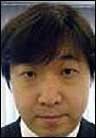EPCglobal, a subsidiary of standards organization GS1, has announced it has completed phase three of a multiyear global project known as the Transportation and Logistics Services (TLS) Industry Action Group RFID Pilot Program. An initial analysis of the project seems to confirm that data read from 433 MHz active RFID container seals and stored on an EPC Information Services (EPCIS) database can be shared effectively by supply chain partners and customs agents in multiple countries.
Since 2006, GS1 and its research partners have been testing the use of RFID technology in shipments over the ocean, air and ground, through customs, ports and distribution centers (DCs). The first phase focused on footwear shipped by sea from Hong Kong to Tokyo (see ‘Largest Global Pilot Yet’ in the Works for EPCglobal). The second phase tested electronic goods and agricultural equipment transported from Shanghai to Los Angeles by air, land and sea (see EPCglobal Transportation and Logistics Pilot Takes Visibility to a Global Level).
The latest phase was intended to study the effectiveness of sharing data stored on an EPCIS database, and of using active RFID seals on containers traveling through customs in Tokyo and Amsterdam. Initial results found that the technology was successful on both fronts, according to Karl Van der Spiegel, GS1 EPCglobal’s marketing manager.
This third phase is the latest in EPCglobal’s investigation into RFID’s ability to provide visibility in the international supply chain of products shipped within Asia, as well as to Europe and North America. The latest phase involved tracking shipments of Canon ink cartridges from a manufacturing plant warehouse in Tokyo to a DC in Amsterdam.
In phase three, which tested tag and reader hardware in a real-life scenario, involved—for the first time—the GS1 Global Shipment Identification Number (GSIN) system. During this phase, a GSIN assigned to the shipment was linked to the container seal’s unique RFID number, enabling customs agents and other participants to log on to a Web-based software application that pulled pertinent information from the EPCIS software, which was populated with data acquired through the reading of the seal’s RFID tag by fixed interrogators throughout the supply chain. NYK Line, one of the world’s largest shipping companies, transported RFID-tagged containers and provided consulting services for all three phases of the pilot, says Naotaka Ishizawa, senior technology officer of the Technical Strategy Group of MTI (the R&D branch of NYK Line) and co-chair of the TLS Industry Action Group.
For approximately four weeks, beginning in December 2008, each shipping container was equipped with an NTT Laboratories 433 MHz active RFID e-seal. Passive EPC Gen 2 UHF RFID tags provided by Toppan Printing were attached to cases of printer cartridges loaded on pallets, and then into shipping containers at Canon’s factory warehouse near Tokyo, destined for Canon Europe’s DC near Amsterdam. Each case contained 18 to 36 printer cartridges, with 72 to 216 cases loaded on every pallet. Approximately 44 to 52 pallets were loaded into each 40-foot container. E-seals were attached to the door of each container, providing a physical lock, as well as transmitting to RFID interrogators along the supply chain. During the test, the TLS group shipped about 10 shipments per week, with a total of 39 containers shipped.
The EPC Gen 2 UHF RFID tags were read at Canon’s Japanese warehouse as the cases and pallets were loaded into the containers. The containers were then secured with e-seals, which were read by an RFID interrogator when commissioned, then again as they left the gate on trucks. Upon entering the Tokyo Port’s container yard, the RFID seals were scanned several times by fixed interrogators as they moved through the yard, as well as through customs, before the containers were loaded on a vessel bound on a 26-day journey to the Amsterdam Port. There, the Amsterdam container terminal also used fixed readers to scan the tags on arriving containers as they passed through Dutch customs, and before they were trucked to the distribution center. At the DC, the seals were read once more and opened before the containers were unloaded. The EPC Gen 2 RFID tags were then interrogated as the pallets and cases were removed, and the empty containers returned again by sea, via the two ports.
Throughout the containers’ movement, data read from the RFID seals was stored on the EPCIS database and made accessible via a password-enabled Web-based application to all supply chain partners, as well as to customs authorities in Japan and Holland. Authorized users included the manufacturer, logistics providers, ocean carrier, customs officials, terminal operators, van pool operators and shipment consignee.
Additionally, active participants supporting the Transportation and Logistics 3 Pilot Program were the Ministry of Economy, Trade and Industry of Japan—which helped fund the project—the port authorities of Amsterdam and Tokyo, and GS1 member organizations from Germany, Japan and the Netherlands. The customs agencies of Japan and the Netherlands were official observers of the pilot program, Van der Spiegel says.
With all three phases of the pilot, Ishizawa notes, the focus was on assessing the practicality of employing active RFID seals, as well as the EPCIS, to share data among the logistics providers, shippers and customs at Amsterdam and Tokyo. Ishizawa presented a description of the third phase at RFID Journal LIVE! 2009, held last week in Orlando, Fla. The next step, he says, is a Transportation and Logistics Phase 4 Pilot Program, which members of the GS1 EPCglobal TLS Industry Action Group are currently preparing. “We have not yet done rail,” he states, adding that such might be the focus of one future pilot project.


